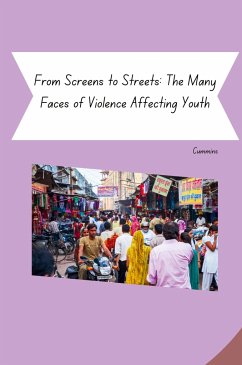Violence exposure is prevalent across the globe (Anderson et al., 2017), resulting in long-term negative outcomes for developing children and adolescents (Huesmann, 2018). Youth encounter violence from different sources, such as in the media (e.g., news, television, movies, video games; Anderson et al., 2003), in the community (e.g., individual and group conflicts; Ng-Mak et al., 2004), in their homes (i.e., Ferguson et al., 2009), and in their country (i.e., violence in the context of war and military conflict; Huesmann et al., 2017, Qouta, Punam ki, & Sarraj, 2008). Early and persistent exposure to violence increases the risk for internalizing problems, such as depression, anxiety, and post-traumatic stress (PTS; McLaughlin & Lambert, 2017; Qouta, Punam ki, & Sarraj, 2008), as well as externalizing problems, such as aggression
Bitte wählen Sie Ihr Anliegen aus.
Rechnungen
Retourenschein anfordern
Bestellstatus
Storno









